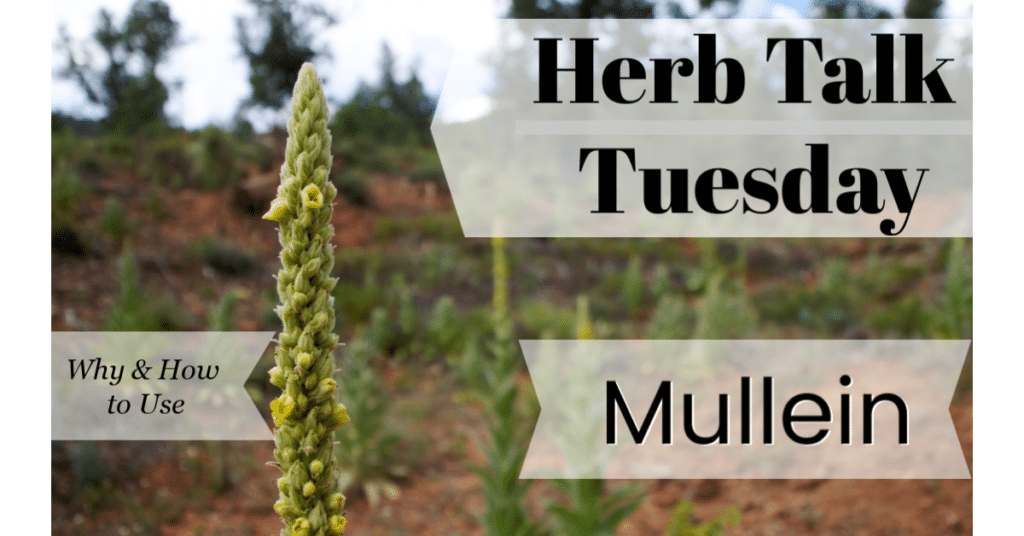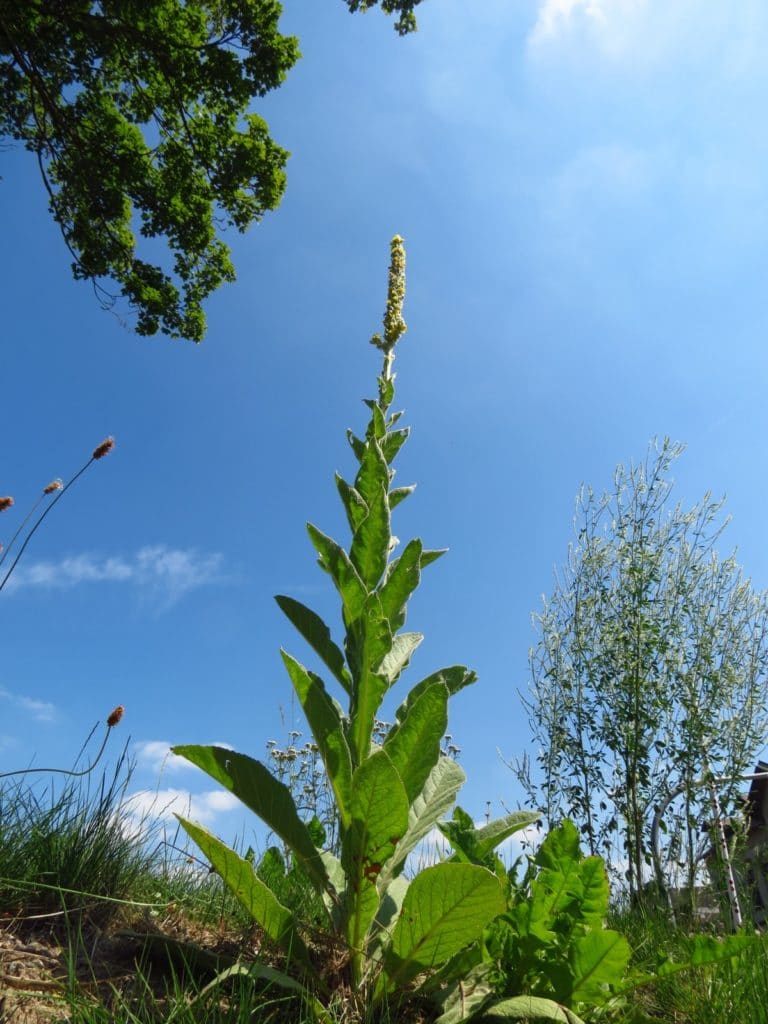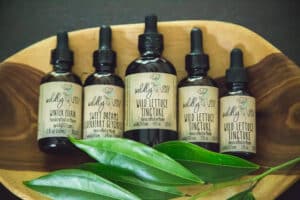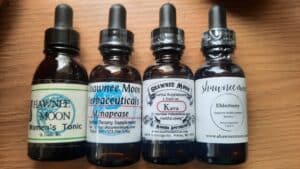
Hey there! It’s Tuesday, and you must be here to talk about herbs! Yay! It’s my favorite. I’m so glad you stopped by. Today, let’s chat a bit about the soft and lovable Mullein plant!
Where & How to find Mullein
Mullein is native to Europe, North Africa and Asia, but it has naturalized here in the US and other parts of the world. It seems to like poor soil, in disturbed areas.

Mullein pops up fairly early (here in Missouri) in the spring, around early March, sometimes late February. As a biennial the first year it begins as a low growing clump of soft, fuzzy, leaves coming off a central base.
As the weeks go through spring of the first year, closing in on summer, a single stalk starts shooting up from the center of the plant. It will over winter and then come back the next spring and this stalk grows taller and taller in the second summer, continuing to put out more soft leaves around the stalk.

By late summer of the second year, the top of the stalk is 4-6 foot tall! And clusters of beautiful yellow blossoms will bloom at the top 12-18 inches of the stalk. It does not come back a 3rd year.
What’s so special about Mullein?
Mullein plant is high in iron, as well as containing magnesium, potassium, rutin (supporting elasticity in tissues) and sulfur.
It is typically suggested as a respiratory tonic as well as a bowel supportive herb because the soft, nourishing nature of the plant. Mullein is toning and soothing to all the mucous membranes while supporting proper excretion of excess mucous.
Considered a tonic for lungs, glands and lymph. Many people recommend mullein ear oil to support healthy lymphatic circulation and general comfort.
How can you use Mullein?
Tea from mullein leaves is mild tasting and pleasant. It is a wonderful tea to add with lemon balm and peppermint for seasonal respiratory support.
Mullein tincture can be useful if you don’t like the taste of the tea, and need to utilize a more concentrated serving at once.
Harvest mullein leaves in the second year before flowering and harvest flowers individually.
The leaves have been used fresh, warmed in hot water for a few minuets then applied topically to reduce occasional redness and soothe the skin and promote normal, healthy skin. Mullein herb is often found in ointments for skin health.

Check out the products from Shawnee Moon that contain Mullein!
Historical notes on Mullein*
Years ago, the stalks were used to make candle wicks, and it was thought the plant could cast out evil spirits.
Pliny the Elder, 77 AD, is quoted as saying about the herb “…beasts of burden that are not only suffering from cough but also broken-winded, are relieved by a draught..”
Greek physician, Dioscorides used the herb for scorpion stings, eye complaints, toothache, tonsillitis and coughs.

Let’s continue the conversation
Leave a comment below! I’d love to hear how you are using Mullein herb! Did you learn anything new today on the blog? Follow me on Instagram and continue the conversation there, or over on our FB Page and FB Group!
Thank you for coming to chat today!
Many blessings in Christ, Kerry
*These are just historical references, and not medical suggestions. They are simply educational and not intended to treat or diagnose disease.





